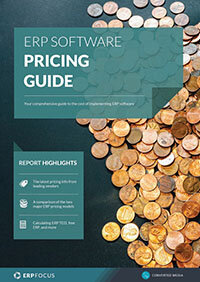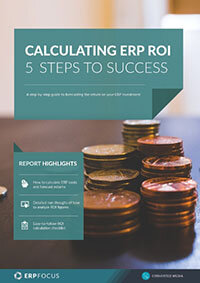The rewards of spending more on your ERP
While the old saying suggesting that ‘you get what you pay for’ may hold true in general, in the case of selecting an ERP platform, you have to be a bit more nuanced about the rewards you’re likely to realize. Consequently, we thought we’d suggest some of the more ‘rewards’ elements associated with selecting an ERP that costs a bit more.
Reach
Today’s market is entirely globalized, and manufacturing operations no longer operate necessarily on the basis of singular facilities. This means that any potential ERP pick must be able to easily accept and operate across international boundaries including the ready application of multi-currency processes. When considering PC Magazine’s top six 2016 ERP platforms, ranging from Oracle to Sage, each platform offered this intrinsic currency capability so, regardless of one of these systems, this upside will end up being a slam-dunk.
Speed
As one might expect, large-scale ERP operations live and die on the speed of execution, since these types of systems typically extend themselves across the globe. Consequently, each premier variant should be measured against other candidates. Acquiring all the bells are one thing, but waiting too long to blow the whistle on the bottom line ends up ruining the result. Again, validating this characteristic will have to apply as matter of subjective decision-making, but core process performance against any/all comers should be considered as a baseline measurement regardless; with the fastest being the best pick based your own intrinsic needs.
Our comprehensive pricing guide will help you figure out how much a new ERP will cost
Scalability
As rewards points go, where performance applies, similar values apply when it comes to the leveraging of scalability that offers a minimum of muss and fuss. As articulated by PCM’s top six, each variant offers plenty of scalability, but the trick will be how much time and money you will have to apply to get where you want to go.
Security
In the past this particular element was important; but not that important. However, with today’s tendency to move operations to the cloud, where every data-stream represents a potential threat vector, failing to focus on a system’s intrinsic level of security can offer a clear way to open Pandora’s Box. Today’s brand providers are not faint of heart when it comes to these kinds of weaknesses, and all of the major players provide for solid native security elements as part of their packages. That said, however, if you really want to burnish the apple, a good way to get the job done will be to investigate how easily base systems interoperate when working with today’s third-party security systems, who typically deliver extended levels of security at the network level. Your ERP will cost more, but it will come with added peace of mind.
Training
More times that not, ERP failures actually begin at the training side of an implementation rather than inside the ops envelope itself. To be a bit blunt, a premier ERP system is only as good as the people that operate it. If an ERP partner’s training programs are weak, or fail to offer the proper level of attention to workforce sensitivity, the whole ball of wax can meltdown in a heartbeat. Consequently, if you are planning to spend a lot of money on a big-time ERP platform, look for big-time training programs as well.
Free white paper

ERP Software Pricing Guide
Get the latest pricing information on over 80 popular ERP systems, and learn how to budget for your ERP project in our free guide

Featured white papers
-

Calculating ERP ROI: 5 steps to success
Calculate your new ERP's financial benefits with this comprehensive guide
Download
Related articles
-

Top 10 ERP selection criteria (including checklist)
The most important ERP selection criteria you should keep in mind during your selection process.
-

CMMC Compliance: What Aerospace and Defense Manufacturers Need to Know
Key insights on CMMC compliance, deadlines, and securing DoD contracts with CMMC 2.0 certificatio...
-

How much does ERP cost? (Free ERP cost and budget guide)
How much does an ERP system cost in 2025? Everything you need to make an ERP software budget

